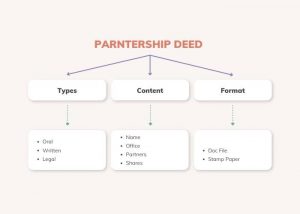Partnership Deed Agreement Contents with Format & Types

Partnership deeds are legal documents that set out the terms and conditions of a partnership. They are usually drawn up by a solicitor and can be very complex documents. In general, they will contain the following information:
- The names of the partners
- The nature of the partnership
- The business to be carried on by the partnership
- The geographical area in which the partnership will operate
- The capital contributions of each partner
- How profits and losses will be shared between the partners
- How the partnership will be dissolved
What is a Partnership Agreement
Partnership agreements are legal contracts between two or more people that create a partnership. There are three types of partnership agreements: general, limited, and joint. A general partnership is the most common type of partnership, and it is created when two or more people agree to share profits and losses equally. A limited partnership is less common than a general partnership, and it is created when one person (the limited partner) invests money with the hope of earning a return while the other (the general partner) manages the business. A joint venture is created when two or more people combine their resources to start a business.
Partnership deeds can be very complex, and it is important to seek legal advice before entering into a partnership. It is also important to ensure that the partnership deed is updated as the business changes, to ensure that all parties are aware of their rights and responsibilities. Partnership deeds are not just for limited companies – they can be used by any type of partnership.

What are the contents of the partnership agreement?
- Partnership agreements are legal documents which set out the terms and conditions of a partnership. They are usually drawn up by a solicitor and can be very complex documents. In general, they will contain the following information:
- The names of the partners
- The nature of the partnership
- The business to be carried on by the partnership
- The geographical area in which the partnership will operate
- The capital contributions of each partner
- How profits and losses will be shared between the partners
- How the partnership will be dissolved
- Partnership agreements can be very complex, and it is important to seek legal advice before entering into a partnership. It is also important to ensure that the partnership agreement is updated as the business changes, to ensure that all parties are aware of their rights and responsibilities. Partnership agreements are not just for limited companies – they can be used by any type of partnership.
